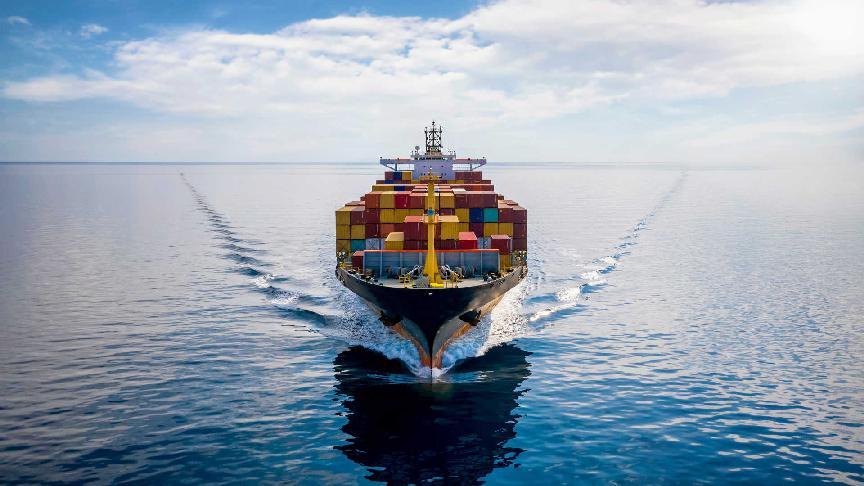25 July (Lloyd's List) - VESSELS that fit the Houthi’s so-called “target profile” are doing more than just rerouting to avoid being targeted by the Iranian-backed militant group.
In the first half of 2024 there were 275 instances of vessels disabling their Automatic Identification System data while sailing significant distances across the Indian Ocean and Arabian Sea on voyages unrelated to Red Sea transits, according to Lloyd’s List Intelligence data.
This figure was 62 over the same period in 2023.
While it is not unheard of for vessels to travel long distances under the cover of AIS gaps in this area, the profile of ships disabling their AIS is different, as are the locations of where the gap is taking place.
Vessels affiliated with Israel, the UK and US, as well as ships within fleets that have been targeted by the Houthis in the past, accounted for 73% of the gaps recorded in the first half of 2024.
That is up from 30% in 2023.
The start and end coordinates of the gap are in areas or adjacent to areas that the Houthis have threatened to attack ships.
The country affiliations of the vessels disabling AIS combined with the locations of the gaps suggest the “dark” transits are a precautionary measure and a direct response to the Houthis’ campaign of aggression against merchant shipping.
The US Maritime Administration and Joint Maritime Information Centre have said that transmitting AIS in the Houthi threat area, or in the vicinity of it, puts vessels at greater risk, as it aids the Houthis in targeting ships.
Despite recommendations to operate offline while sailing through the Red Sea and Gulf of Aden, the majority of vessels that continue to transit the Bab el Mandeb do so with AIS enabled.
Only 6% to 9% of weekly passings through the Bab el Mandeb are “dark” transits, according to analysis of Lloyd’s List Intelligence data.
In absolute terms the volume of gaps is similar to levels seen last year.
Some security analysts disagree with guidance to disable AIS and warn that sailing offline should not be considered a mitigation measure.
“There has never been any evidence that AIS is actually used to target ships and importantly the Houthis have successfully targeted a number of vessels which were not broadcasting AIS,” says senior analyst at Risk Intelligence, Dirk Siebels.
There are safety implications and potentially compliance complications for vessels that disable their tracking data.
“It’s a lot harder to locate a ship after an incident in the middle of the ocean when AIS is off,” explains Siebels.
“Further, there may be longer-term commercial implications, as extensive AIS gaps in a vessel’s history could complicate the due diligence process during business transactions.”
Other maritime security analysts say that vessels with obvious associations with Israel, the US or UK may find it worth considering AIS depending on where they are operating given the capability range of the Houthis.
“The Houthis do not rely completely on AIS to track their targets, but switching it off does take one potential tool from them,” says director at Control Risks Cormac Mc Garry.
It is not just ships sailing in the immediate region of the Houthi threat area that are deciding to operate offline, with a significant jump in vessels sailing across the Indian Ocean between the Cape of Good Hope and coasts of India as well as Indonesia.
In the first half of 2023 there was a negligible number of AIS gaps that fit this pattern, six in total.
The figure starts increasing in January of this year, with 12 gaps in that month alone, coinciding with the mass exodus from the Red Sea, which started in mid-December as the Houthi attacks became increasingly frequent and indiscriminate.
The number of AIS gaps have remained at elevated levels hitting a high of 20 in April, with 80 recorded from January to June of this year.
The Houthis announced in mid-March that they would expand the scope of their missile attacks to include ships in the Indian Ocean diverting around the Cape of Good Hope.
The first successful attack against a vessel in the Indian Ocean was on April 26, when a drone hit containership MSC Orion (IMO: 9857157).
Since then, there have been two instances of the Houthis attempting to attack ships further outside the traditional zone of aggression, according to JMIC data.
MSC Sarah V (IMO: 9181675) and Maersk Sentosa (IMO: 9315202) were targeted by missiles on June 24 and July 9, respectively.
Vessels are most often targeted by the Houthis within the established threat area, which encompasses the southern area of the Red Sea and western area of the Gulf of Aden.
The Houthis said in a statement on July 23 that they are entering a new phase of their operations which includes “stopping all enemy naval supplies through the Cape of Good Hope” and escalating their attacks in the Indian Ocean.
Security analysts say that new weapons capabilities could spell more attempted attacks outside the traditional threat zone.
“The Houthis have demonstrated new capabilities which means they can target vessels further away and may have more success doing so because the drones are being made with materials that are harder to trace with radar,” says EOS Risk Group head of advisory Martin Kelly.
Other experts reinforce that the most vessels remain at low risk in the Indian Ocean.
“While the Houthis can reach the Indian Ocean, hitting a moving ship at distance is not the same as firing a missile at a city. The further away the moving target is, the more difficult it becomes to hit,” says Mc Garry.
“But, if the Houthis choose to try to strike a ship at that range, they will likely go for one with strong Israeli, US or UK association.”







